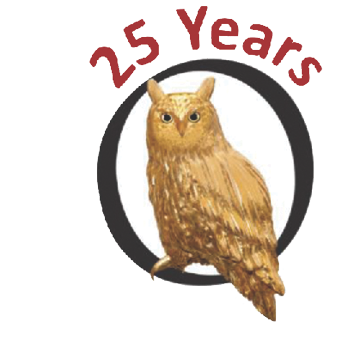
Test your wits at the Suffield Trivia contest on Wednesday, February 21, 2024. Sponsored by the Suffield Historical Society, it will take place at 7 p.m. in the Community Room at the Second Baptist Church located at 100 North Main Street. Answer as many of the 30 questions as you can, and you could win a prize! Individuals and teams are welcome!
1. The Friends of Hilltop was formed in 2002 to preserve the remaining property of Hilltop Farm. When did the group get the Hilltop Farm Historic District listed on the National Historic Register of Historic Places?
a. 2007
b. 2005
c. 2010
2. How many Suffield places, including Historic Districts and the Farmington Canal, are listed on the National Historic Register of Historic Places to date?
a. Twelve
b. Ten
c. Seventeen
3. Chet Kuras, who died in 2021, and his wife Sally, owned the Kuras Farm in West Suffield. In 2005, they celebrated an important anniversary of the farm. What was it?
a. 200th
b. 150th
c. 100th
4. Bob Borg, still an energetic and popular figure in town, was honored with a testimonial dinner at the Masonic Lodge in 2005. In addition to the Masons, what other organizations in Town has Bob been involved in. Choose all of the following that are correct.
a. Boy Scouts
b. Friends of the Farm at Hilltop
c. Suffield Agri-Science Center
5. Suffield has experienced heavy rainfalls in the last few years, but the Flood of 1955’s recorded rainfall in the town has not been surpassed. Lester Smith wrote in the Observer about the ’55 Flood in September 2005. How many inches of rain fell on Suffield from August 17-20 in 1955?
a. 25 inches
b. 17 inches
c. 14.5 inches
6. Also, in the previously mentioned article, Mr. Smith wrote that temporarily, due to washed-out roads and raging waterways, there was only one road that accessed the town. From what town was Suffield accessible?
a. From Granby
b. From Windsor Locks
c. From Feeding Hills
7. In July 2005, two scientists from the U.S. Department of Agriculture came to town to collect samples according to an article written by Lester Smith in the September 2005 Observer. What were they looking for?
a. The eggs of a small parasitic fly
b. Japanese beetles, as there was a regional infestation of them
c. Tobacco plants
8. The ornate, yellow Carpenter Gothic house located on Mapleton Avenue was lovingly restored in 1974 after being severely damaged in a fire. As written by Mary Anne Zak in an October 2005 article, the house has been continuously inhabited by members of a family which has lived in town for generations. What is the family’s surname?
a. Sikes
b. Fuller
c. Kent
9. Heavy rain on October 15, 2005, destroyed a major town landmark which Historian Lester Smith sadly noted in the November 2005 issue of the Observer. What was the landmark?
a. The Schwartz pond dam
b. The Stony Brook dam at Cain’s Pond
c. The Stony Brook dam between East Street South and the Connecticut River
10. Timothy Phelps was the subject of Mary Anne Zak’s column Now and Then in November 2005. Phelps was an entrepreneur and a military man who, in 1795, commissioned a house built by Joseph Howard. The house is still standing on South Main Street across from Barry Street. Did Phelps oppose the War of 1812?
Yes or no.
Answers
- b. 2005
- a. Twelve
- c. 100th. The Kuras family has lived on the farm for generations – five according to the 2005 article. It was purchased in 1905 by Baltrannius Kuras and his wife Anna who left Lithuania while it was under Russian occupation.
- All answers are correct. Borg has served on many more boards, commissions and organizations.
- b. 17 inches
- c. From Feeding Hills
- a. The eggs of a small fly called istocheta aldrichi or winsome fly which serves as a natural control of Japanese beetles. When the eggs hatch, the maggots burrow in and eat the insides out of the beetles.
- a. Sikes
- b. The Stony Brook dam at Cain’s Pond. The three dams listed as answers were the three major dam sites of early Suffield. The dam at Cains Pond had powered a saw mill, an early iron works and a grist mill that had been operational until the Flood of 1955.
- Yes. Phelps opposed the war as many New England Federalists did because they felt it was unnecessary and only promoted James Madison’s political interests. They also believed it jeopardized commerce, particularly the maritime trade and they did not want to invade Canada. Initially, when Phelps was commissioned to serve in it, against his will, he refused but he later accepted the commission.